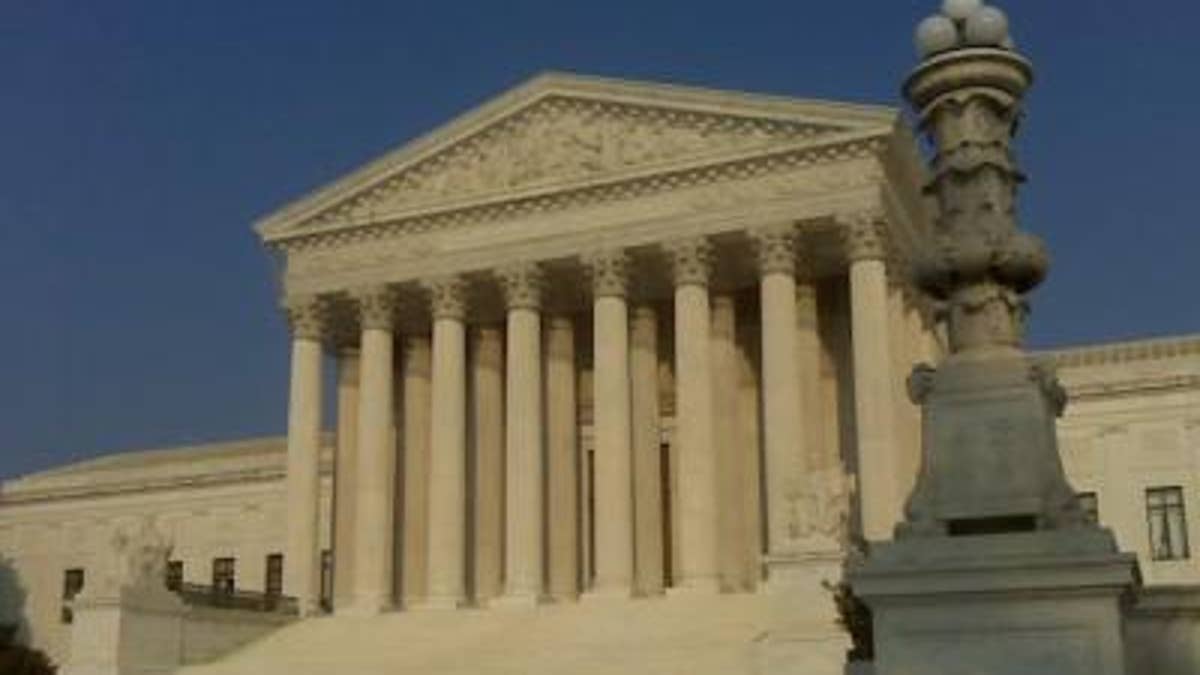
FOX News Photo
With six weeks remaining in the Supreme Court's term the justices still have 39 opinions to hand down including at least eight in high-profile cases before they break for the summer.
Monday's release of three opinions in cases that drew little attention certainly gets the court a bit closer to the finish line but as is often the case when the term's end comes near, the justices are all but certain to add some additional days to the schedule to dispense with all of their work before the summer recess.
There's a certain rhythm to how the Supreme Court does its work each year. The term starts in October and by time the justices reach the home stretch in June there's sure to be a smattering of significant opinions. But like any college student who checks the syllabus for the last possible date to finish an assignment, the justices will linger over the toughest opinions for as long as they can.
Of the 39 cases outstanding five of them were argued last year. These include two cases argued more than six months ago. On November 2, the justices heard arguments in a case that examines the constitutionality of a California law banning violent video games. A lower court invalidated the measure as a broad violation of the First Amendment.
The other case, argued just a week later, is a thorny dispute over immigration laws and whether it's legal to have different residency requirements for mothers versus fathers when it comes to their children.
It's unknown why the justices are taking so long to issue their rulings in these cases or when they announce their decisions. It stands to reason that they are closely divided over the outcome with various drafts of opinions and dissents being circulated between the nine chambers.
The justices hear cases in two week intervals and Chief Justice John Roberts tries to assign each justice at least one opinion per sitting. Of the 12 cases argued in the November sitting, Justices Samuel Alito and Sonia Sotomayor are the only two not to have issued a majority ruling.
An Alito opinion in the California case will be noteworthy because of his lone dissent in another First Amendment case that drew considerable attention. Alito's belief that pickets at military funerals aren't protected speech was the latest instance of his more limited view of First Amendment speech rights.
A pair of cases argued in the December block will also generate headlines when the rulings are handed down. In another dispute from California, the justices have been asked to pass judgment on a lower court ruling forcing the state to release 40,000 inmates to reduce its overcrowded prisons.
The court has also yet to issue a decision about a controversial immigration law from Arizona. The law penalizes employers who knowingly hire illegal workers and also forces them to use of the federal e-verify database. The case does not cover the SB 1070 law that was subject to so much national attention last year. A federal judge issued a stay preventing much of that law from taking effect and earlier this month Arizona Governor Jan Brewer announced she will appeal the decision to the high court.
Other high-profile disputes expected to be resolved in the next six weeks include: a challenge to the estate left to Anna Nicole Smith, whether former Attorney General John Ashcroft can be held personally liable for his post-Sept. 11 directives, if an Arizona campaign finance law giving additional public money to candidates who face well-heeled challengers is permissible, whether millions of female Walmart workers can file a class action suit against the retailer and if states can sue power companies for supposedly excessive carbon emissions that allegedly lead to global warming.
























